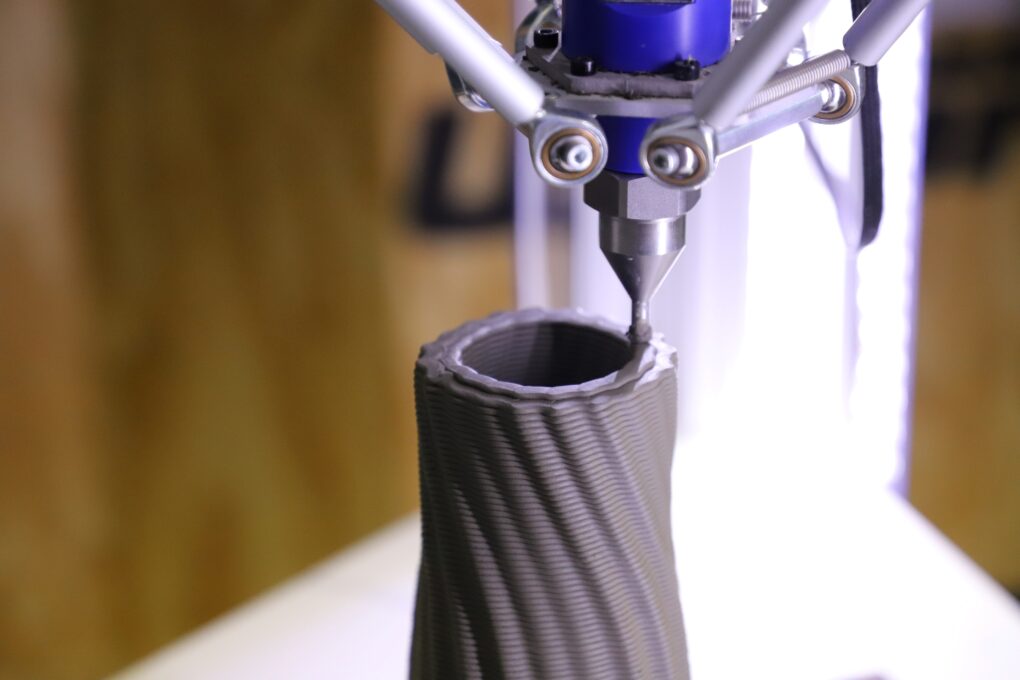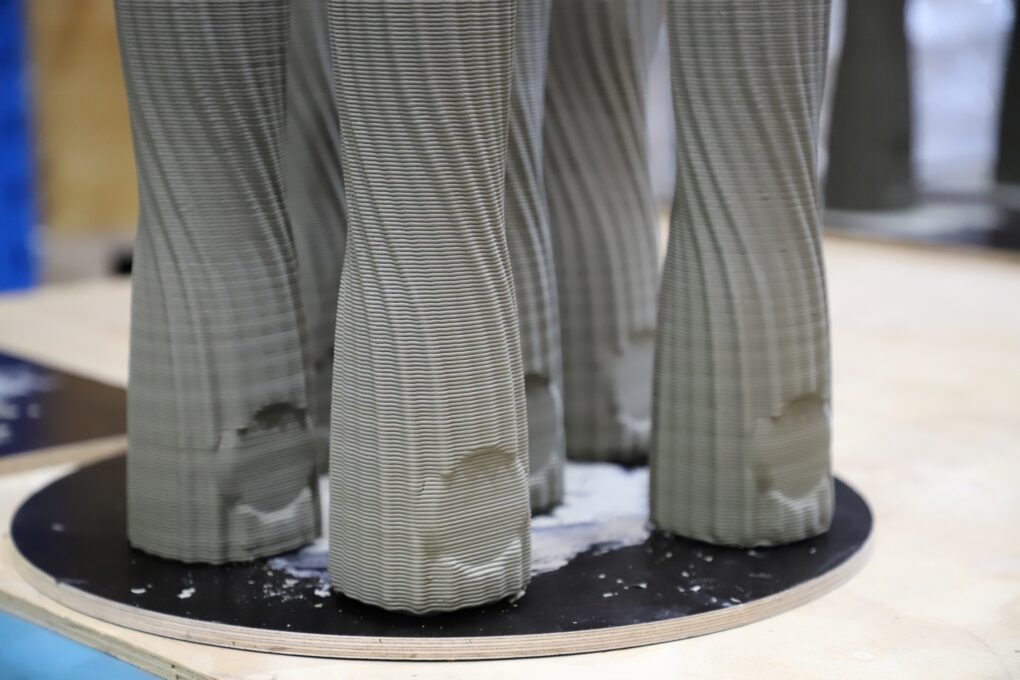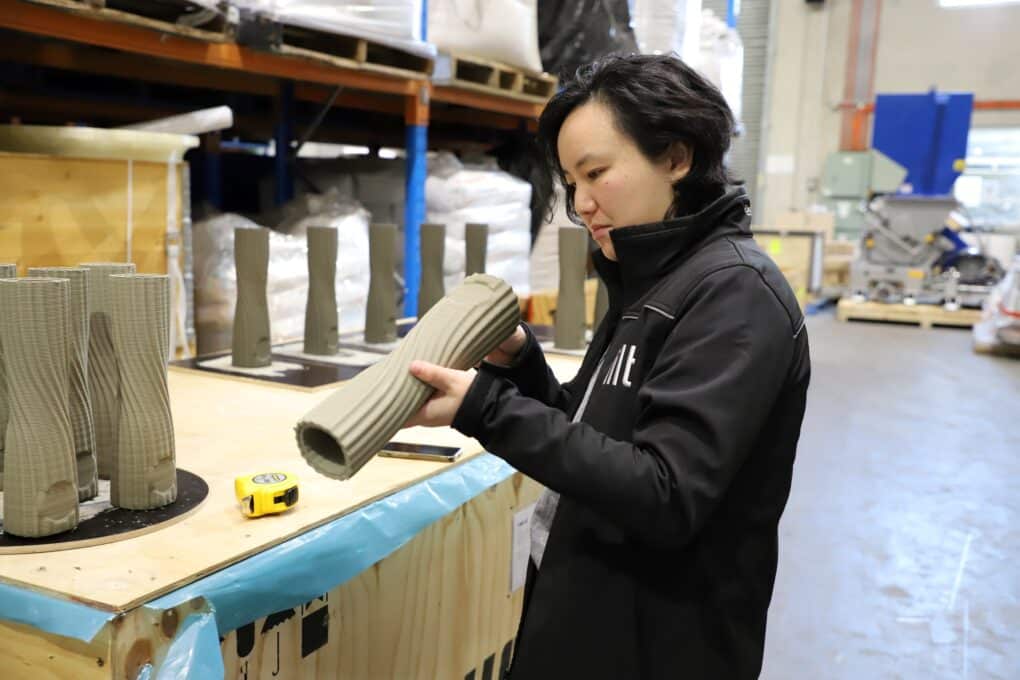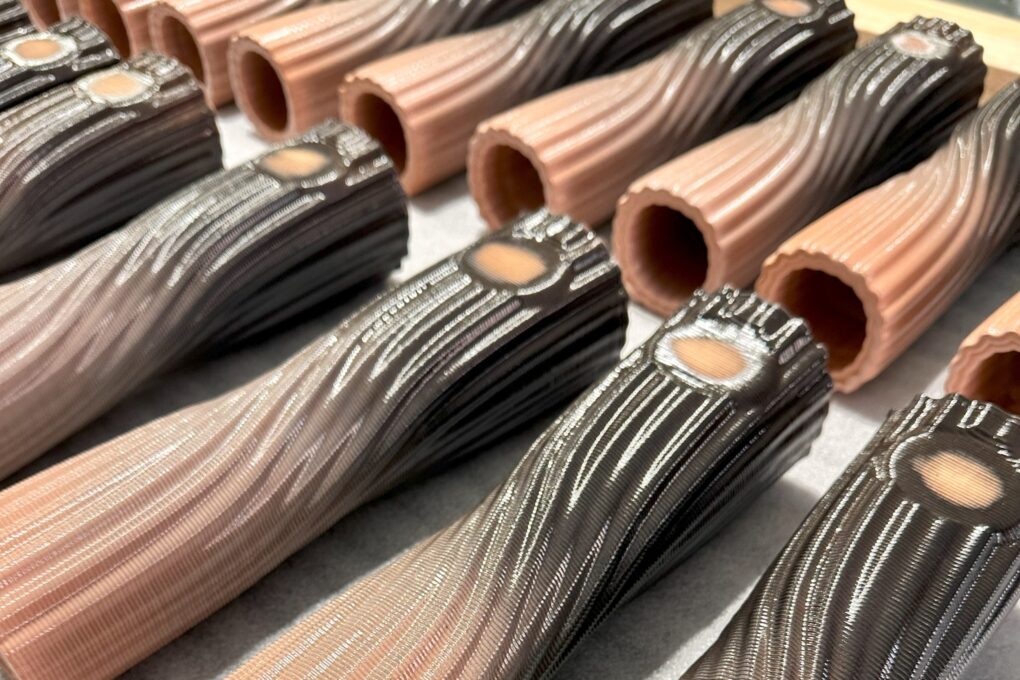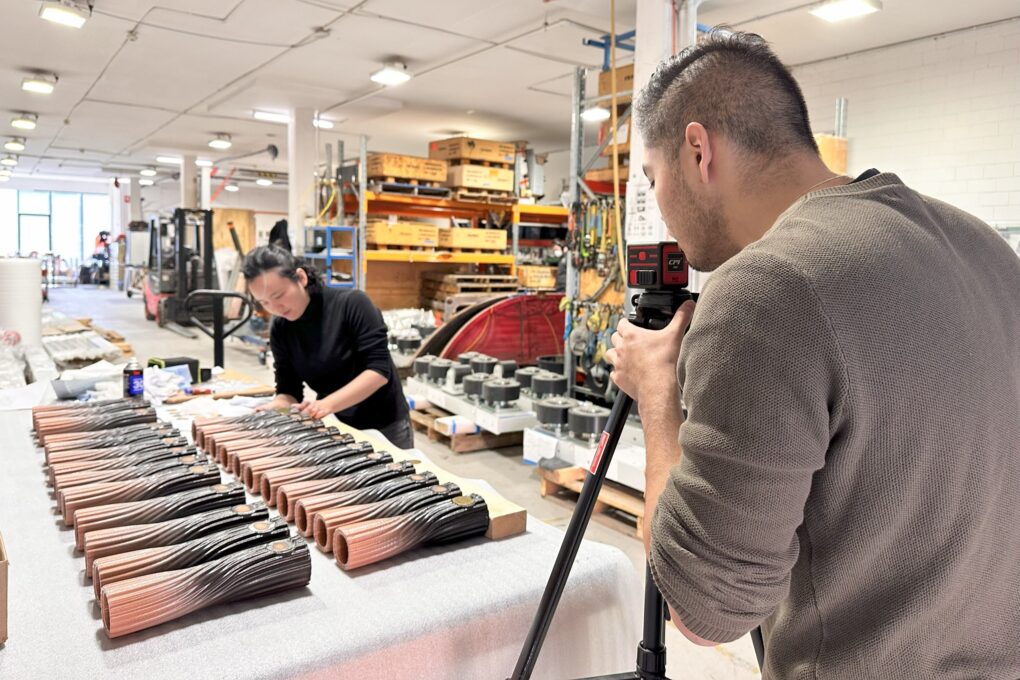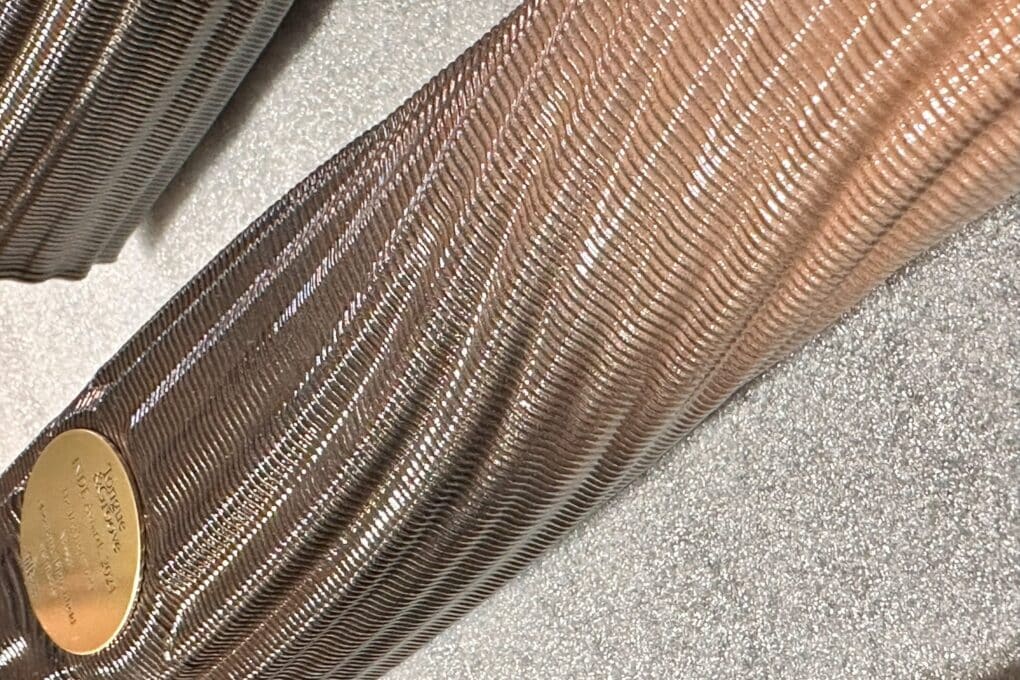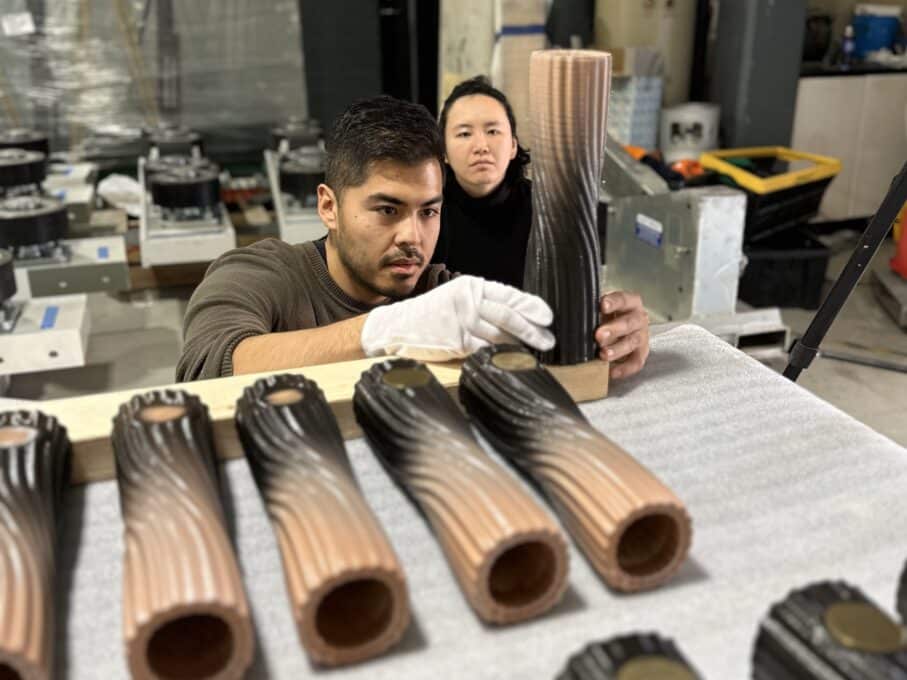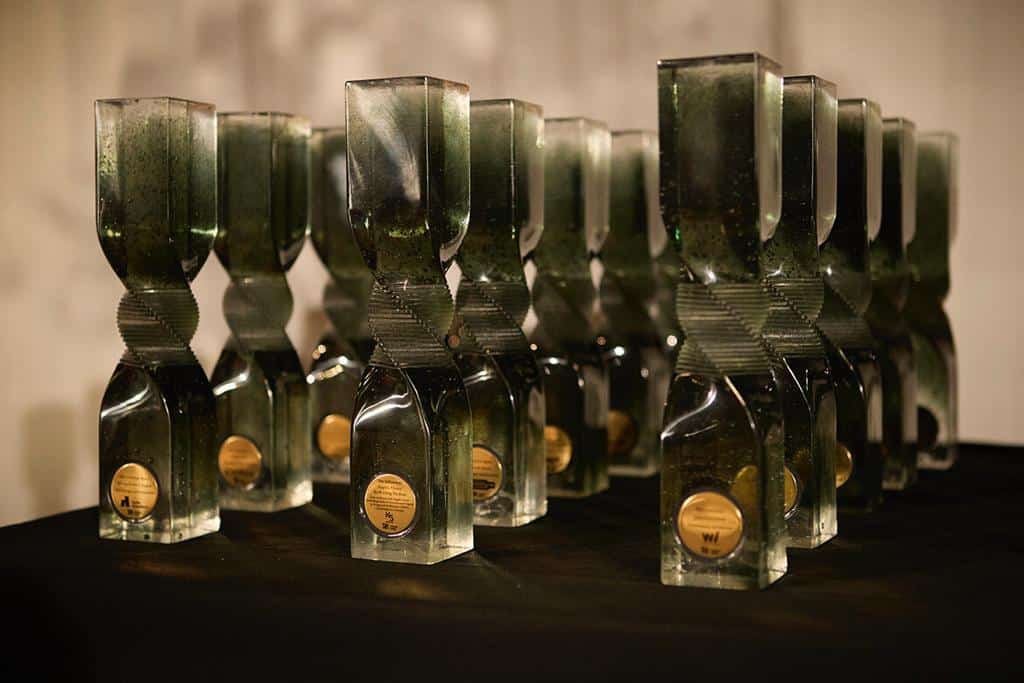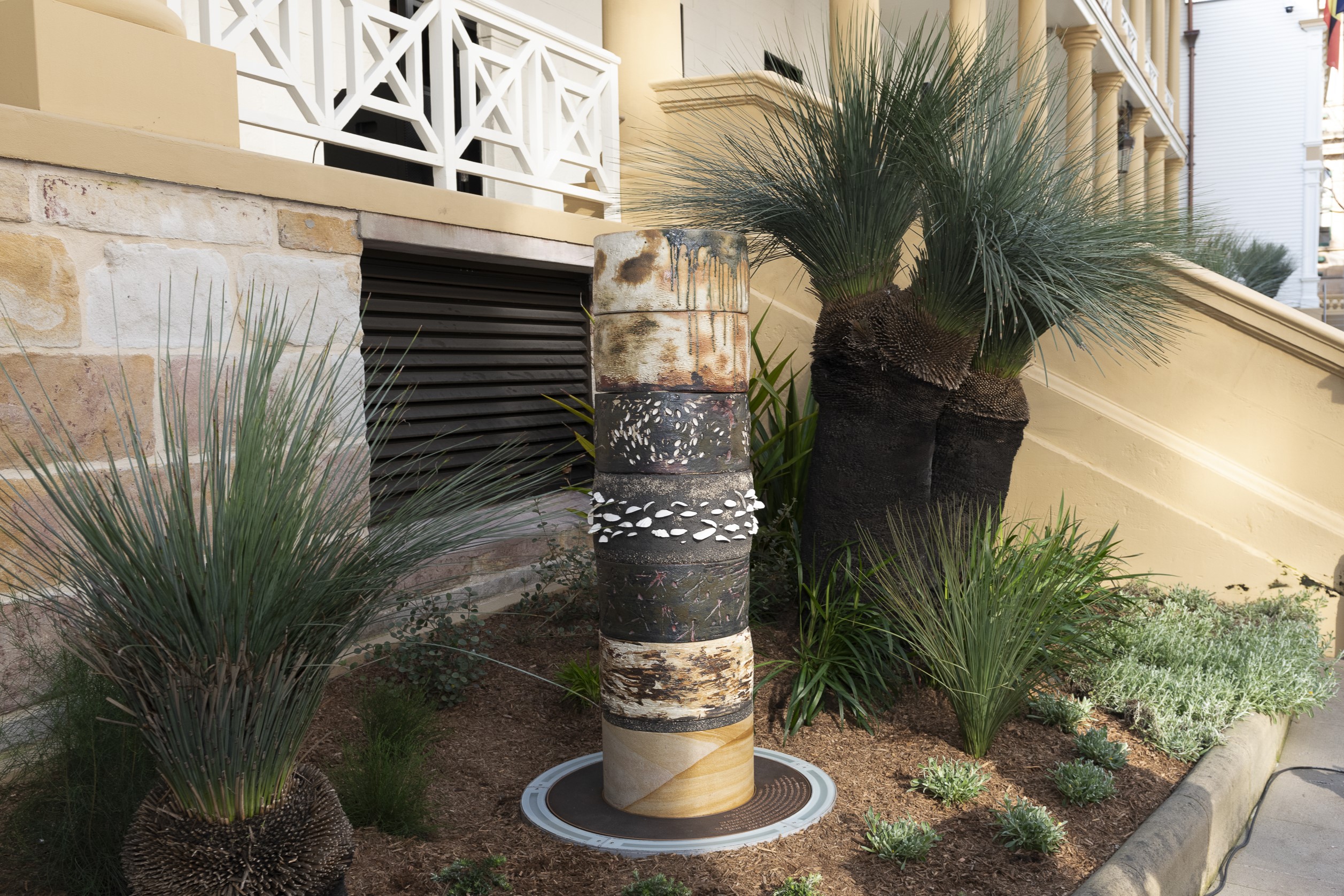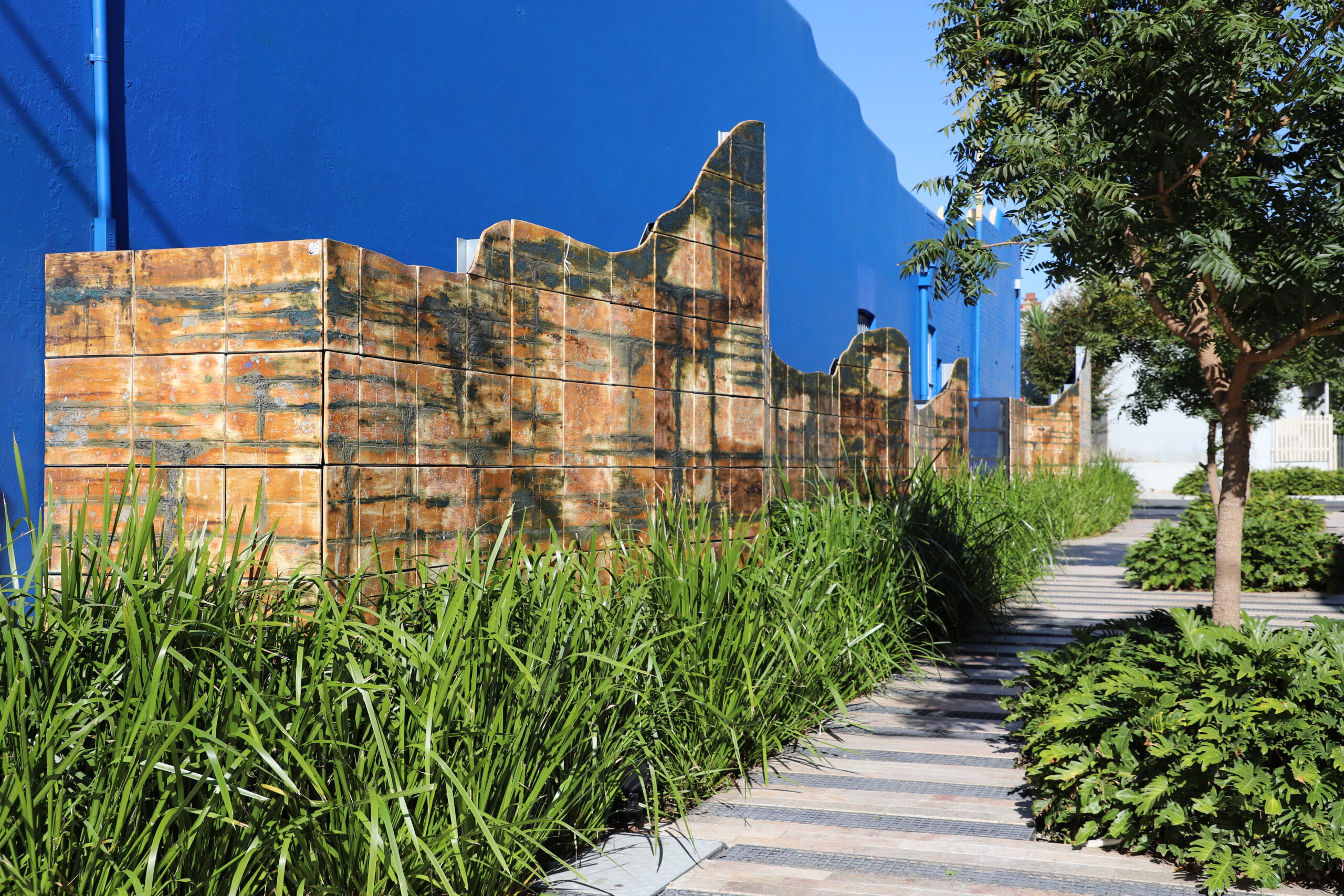-
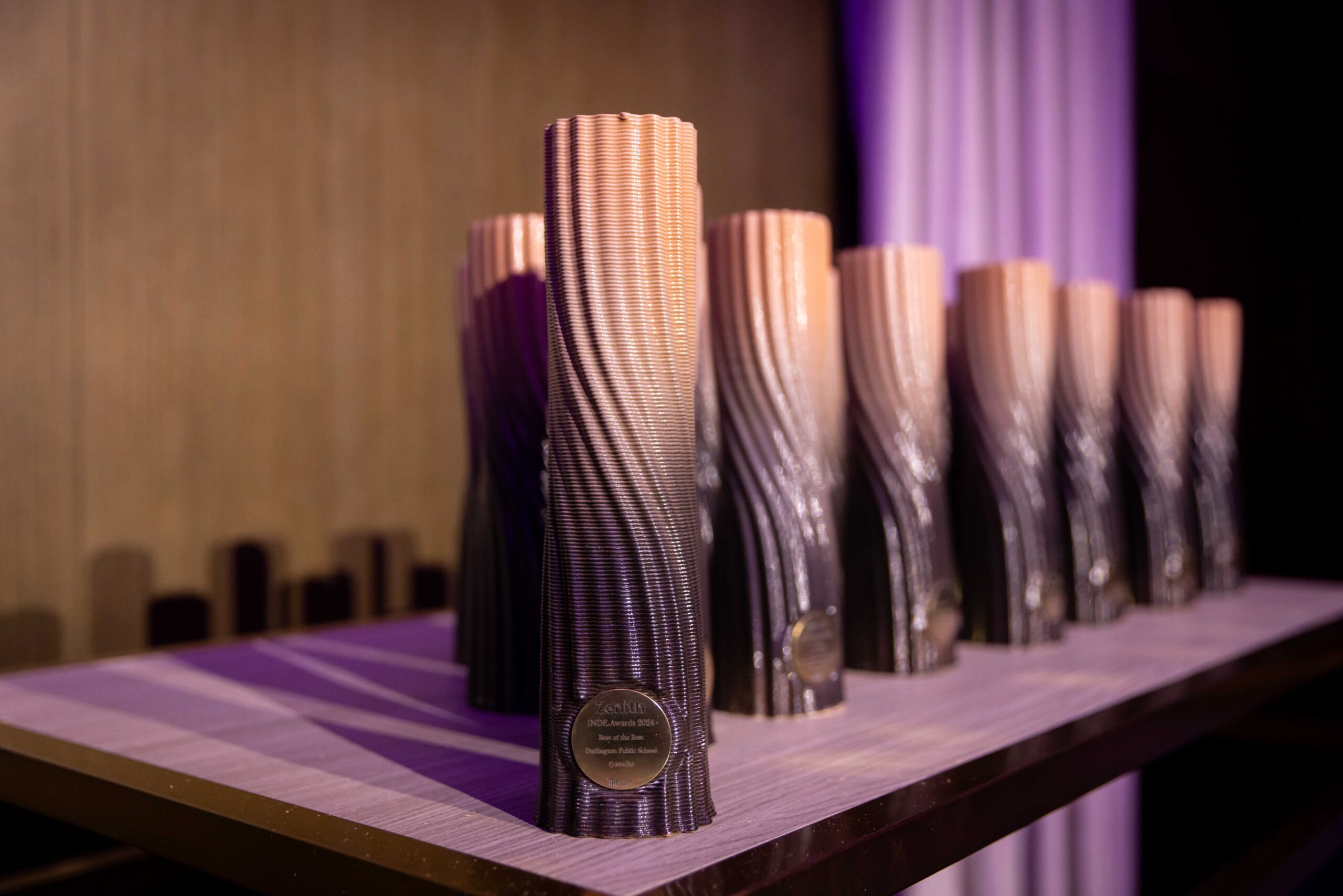
INDE.Awards 2024 trophy design
-
Tilt teams up with INDE.Awards for 2024 trophy
Building on the success of the 2023 INDE Awards trophy design, Tilt was invited to partner with Indesign for the second consecutive year. Embracing a fresh approach, the new design is in contrast to artisanal glass-making methodology from the previous year. The new trophy showcases Tilt’s expertise in digital design, combined with cutting-edge 3D printing technology and the artistry of celebrated ceramicist Simon Reece.
-
In early ideation sessions, various ideas and materials were workshopped by Tilt’s creative team. The chosen concept developed by Yuxiao Wang, a specialist computational modelling designer, was conceived as a synergy of modernity and tradition. The trophy retains its signature ‘fabric twist’ from the 2023 design, with a new aesthetic achieved by the high-tech 3D ceramic printing process. The trophy contains 20 ‘ribs’ reflecting each of the 20 award categories and symbolises the connections between the different disciplines within the creative industry.
Yuxiao explains, “Like any other design project, the INDE trophy design is bound by parameters – the brief, material limitations, and manufacturing capabilities. With a generative computational design approach, we were able to rapidly iterate through design options to optimise the trophy and balance the design parameters, while achieving an elegant form.”
-
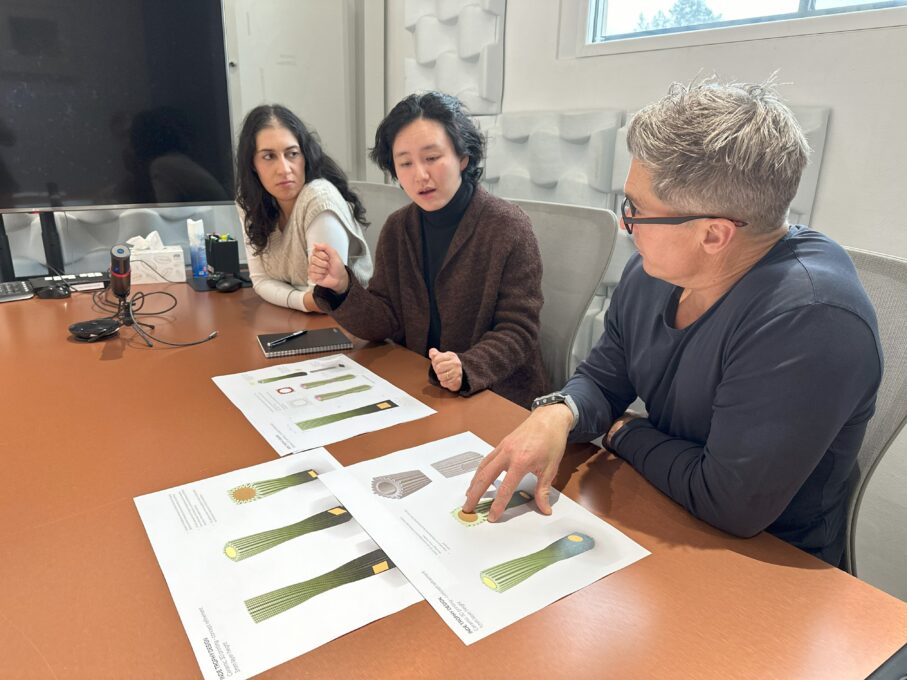
-
Upon selecting the 3D printing method, Tilt sought the expertise of DeltaPrint 3D Australia, the importer of the advanced Wasp3D printer. With Yuxiao’s digital model of the trophy, DeltaPrint began testing the design and trialling the ceramic mix that would produce a smooth and robust trophy. The printer meticulously deposited each layer of clay on top of the previous, creating the trophy’s form from the ground up. Once the trophies were printed, they dried for several days, allowing the layers to bond.
-
Blending modern techniques and the ancient craft of clay, Tilt invited Simon Reece to collaborate on finishing the trophies. Simon, a renowned contemporary Australian ceramic artist, was chosen for his mastery of clay and specialised glazing finishes, which he developed while working abroad in Japan and Europe.
“Having always wanted to play with 3D printed ceramics, when the call came from Tim asking if I would like to be involved with the INDE.Awards trophies, I jumped at it! “ said Simon.
The glazing was designed to tie in with the INDE.Awards brand colours – black fading to white. Simon applied the bisque and glaze by hand and then transferred the trophies to the kiln for firing over several days. As with the unpredictability of clay, the colour resulted in black faded to pink, with the high-iron content of the clay showing through the white glaze. Adding to the challenge, several trophies broke apart during the firing, likely a consequence of 3D printing and the layers drying at different times. Tilt and Simon embraced the outcomes from their research and development, which informed each prototyping round.
Simon added, “It was exciting and tricky, and with Tilt making many trips to Blackheath, a beautiful object resulted. Tilt always looked for solutions, and the problems faded away.”
-
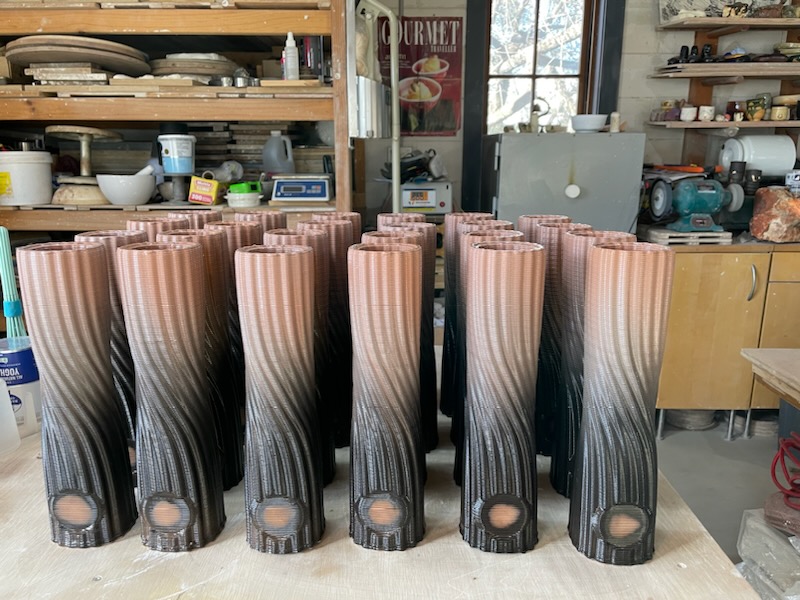
-
Through additional batches, the final set of trophies was completed with their subtle earthy tones. The trophies returned to Tilt to attach the brass-etched plaques displaying the winners’ and category names. Their journey continued, with each trophy carefully wrapped and packed and transferred to Melbourne for the INDE Awards Gala Night.
-
The trophies were gratefully received by the winners, along with an appreciation of the process of their creation, as commented by one winner, Koichi Takada of Koichi Takada Architects, “The INDE.Awards trophy is one of the most beautiful we’ve ever received. I love the contrast between the complex 3D printing and the traditional earthy materiality – the duality reminds me of our architecture. It’s a surprising result and feels wonderful to hold.” Koichi Takada Architects was awarded for the Upper House in the Multi-Unit Residential Building award.
-
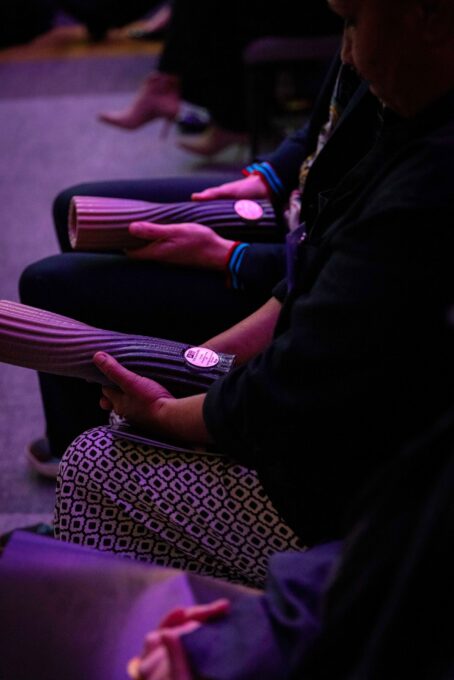
-
The opportunity to work on this project was a rare opportunity for the Tilt team, “We saw the brief as a really exciting opportunity for Tilt to be the creative.” said Tim Phillips, Tilt Managing & Creative Director. ”So often we receive a creative brief or a concept design from others so this gave us the rare chance to unleash our creativity and reinvigorate the concept development process through to a resolved product” Tim said.
The 2024 INDE.Awards trophies represent a fusion of cutting-edge technology and exquisite craftsmanship. Leveraging computational design and 3D printing has enabled an intricately detailed sculpture to be created that captivates both the eye and the touch. The harmony of the ceramic bisque and hand-glazing adds a human element, allowing for variations and subtle changes that make each trophy unique and intriguing.
READ MORE:
>2024 INDE.Awards Trophy Design case study -
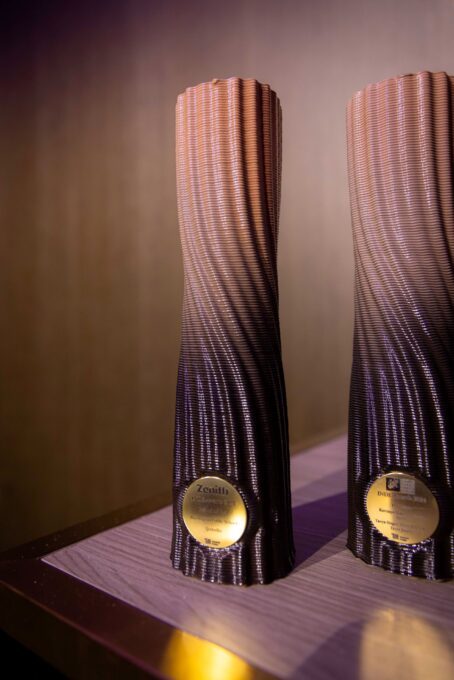
-
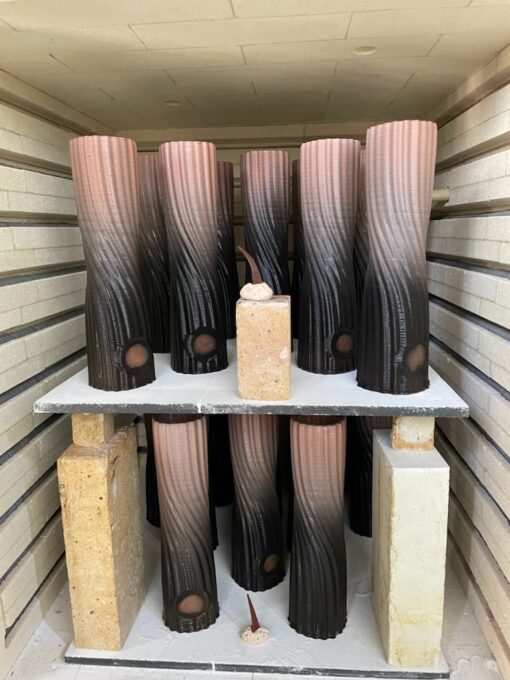
“The INDE.Awards trophy is one of the most beautiful we’ve ever received. I love the contrast between the complex 3D printing and the traditional earthy materiality – the duality reminds me of our architecture. It’s a surprising result and feels wonderful to hold.”
– Koichi Takada Architects
(winner of the Multi-Unit Residential Building award for Upper House) -
Related projects
-
Latest news and insights
-
Enquiries
New business — studio@tilt-industrialdesign.com
Careers — studio@tilt-industrialdesign.com
Press & media — marketing@tilt-industrialdesign.com
We acknowledge the Traditional Owners of Country throughout Australia and their continuing connection to land, waters and community. We celebrate the value and diversity of First Nations art forms, cultures and languages, and their ongoing significance today. We pay respect to Elders past and present.
